
University of the Arts (UArts) was a private arts university in Philadelphia, Pennsylvania. Its campus made up part of the Avenue of the Arts cultural district in Center City, Philadelphia. On May 31, 2024, university administrators suddenly announced that the university would close on June 7, 2024, although its precarious financial situation had been known for some time. It was accredited by the Middle States Commission on Higher Education.

Jane Golden is an American artist who has been an active mural painter and community organizer since the 1970s.
Mural Arts Philadelphia is a non-profit organization that supports the creation of public murals in Philadelphia, Pennsylvania. Founded in 1986 as the Mural Arts Program, the organization was renamed in 2016. Having ushered more than 4,000 murals into being, it calls itself "the nation’s largest public art program." As of 2024, the organization runs 50 to 100 public art projects each year, including new murals in neighborhoods such as Kensington, Northern Liberties, and the Gayborhood. It also works to maintain existing murals.
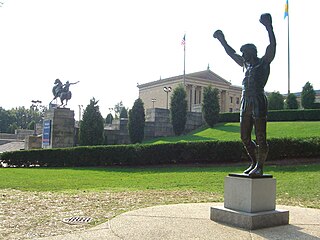
The culture of Philadelphia goes back to 1682 when Philadelphia was established by William Penn, founder of the colonial-era Province of Pennsylvania. Philadelphia emerged quickly as the largest and most influential city in the Thirteen Colonies.
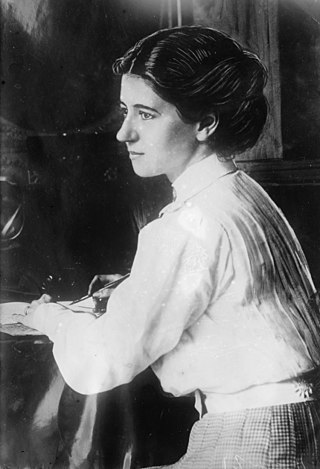
Violet Oakley was an American artist. She was the first American woman to receive a public mural commission. During the first quarter of the 20th century, she was renowned as a pathbreaker in mural decoration, a field that had been exclusively practiced by men. Oakley excelled at murals and stained glass designs that addressed themes from history and literature in Renaissance-revival styles.
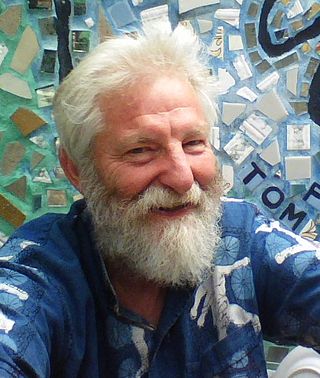
Isaiah Zagar is an American mosaic artist based in Philadelphia. He is notable for his murals, primarily in or around Philadelphia's South Street.
Bo Bartlett is an American Realist painter working in Columbus, Georgia and Wheaton Island, Maine.

Stephen J. Powers is an American contemporary artist and muralist. He is also known by the name ESPO, and Steve Powers. He lives in New York City.

John Nelson Shanks was an American artist and painter. His best known works include his portrait of Diana, Princess of Wales, first shown at Hirschl & Adler Gallery in New York City, April 24 to June 28, 1996, and the portrait of president Bill Clinton for the National Portrait Gallery.

Diane Burko is an American painter and photographer. She is based in Philadelphia and Bucks County, Pennsylvania. Her work addresses landscape, climate change and environmental activism.
The Philadelphia Redevelopment Authority (PRA) was created by the Commonwealth of Pennsylvania's Urban Redevelopment Law of 1945. Until the Fall of 2011 it was known as the Redevelopment Authority of the City of Philadelphia (RDA).

George Matthews Harding (1882–1959) was an American painter, author-illustrator, and a muralist. He served as an official war artist during World War I and World War II.
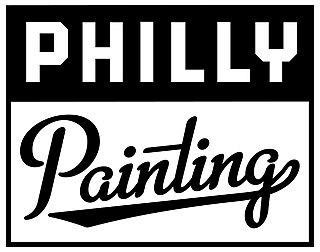
Philly Painting is a community-driven art project in North Philadelphia. The goal of the project is to create artwork in the town with the help of the local people. The project is organized by Philadelphia Mural Arts Program and spearheaded by the Dutch artist duo Haas&Hahn. As the first phase of Philly Painting project, Haas&Hahn hired and trained a group of people to paint 50 storefront buildings on Germantown Avenue, east of Broad Street in North Philadelphia in 2012.

Robert Beck is an American painter and writer. He is best known for his plein air paintings of scenes in and around Bucks County, Pennsylvania ; Jonesport, Maine; and New York City, typically in multiple-painting series.
Ethel V. Ashton was an American artist who primarily worked in Philadelphia, Pennsylvania. She was both a subject of noted artist Alice Neel and a portraitist of Neel. Her early works reflect the influence of Ashcan realism focused primarily on portrait painting. She was commissioned to work on the Works Progress Administration's post office mural project and has works hanging in the permanent collections of several prominent museums. By the mid-1950s she worked with abstract concepts and through the end of the civil rights era, her works synthesize both abstract and realism. She also served as the librarian of the Pennsylvania Academy of the Fine Arts from 1957 into the early 1970s.
Jesse Krimes is an American artist and curator who focuses on criminal injustice and contemporary perceptions of criminality.

Karyn Olivier is a Philadelphia-based artist who creates public art, sculptures, installations and photography. Olivier alters familiar objects, spaces, and locations, often reinterpreting the role of monuments. Her work intersects histories and memories with present-day narratives.
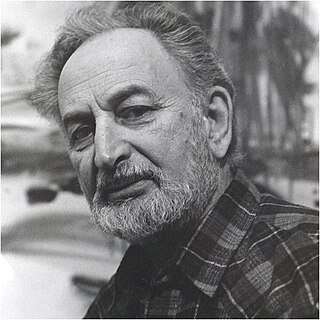
Hugh Mesibov was an American abstract expressionist artist who began his career as a federal artist for the Works Progress Administration during the Great Depression and later became a member of the 10th Street galleries and part of the New York School during the 1940s-60s. His work has elements of the mid-20th-century New York artistic experience such as Surrealist and Abstract Expressionist and figurative aspects across several media such as watercolor, oil, and acrylic as well as etchings, lithographs and monoprints. His work has received a global reputation and is included in many collections in the United States and worldwide.
Leroy Johnson was a largely self-taught African American artist who used found materials to create mixed-media works. He was known for his paintings, assemblage sculptures and collages that were inspired, influenced and reflective of African American history and his experiences living in the inner city of Philadelphia.
Richard J. Watson is an American artist. He was born in Badin, North Carolina. He attended the Pennsylvania Academy of the Fine Arts. In the 1970s, he collaborated with Walter Edmonds to create murals for the Church of the Advocate in Philadelphia, which was a center of activity for the civil rights movement in North Philadelphia. The church commissioned them to paint murals for the interior. They were requested to portray a combination of Black history and themes from the Bible. They were active in the Church of the Advocate and they donated their time to create the murals. 14 murals were completed from 1973 to 1976. Titles include "Creation", "I Have a Dream", "The Lord smote the firstborn in the land of Egypt" and "God has chosen the weak to confound the strong".













